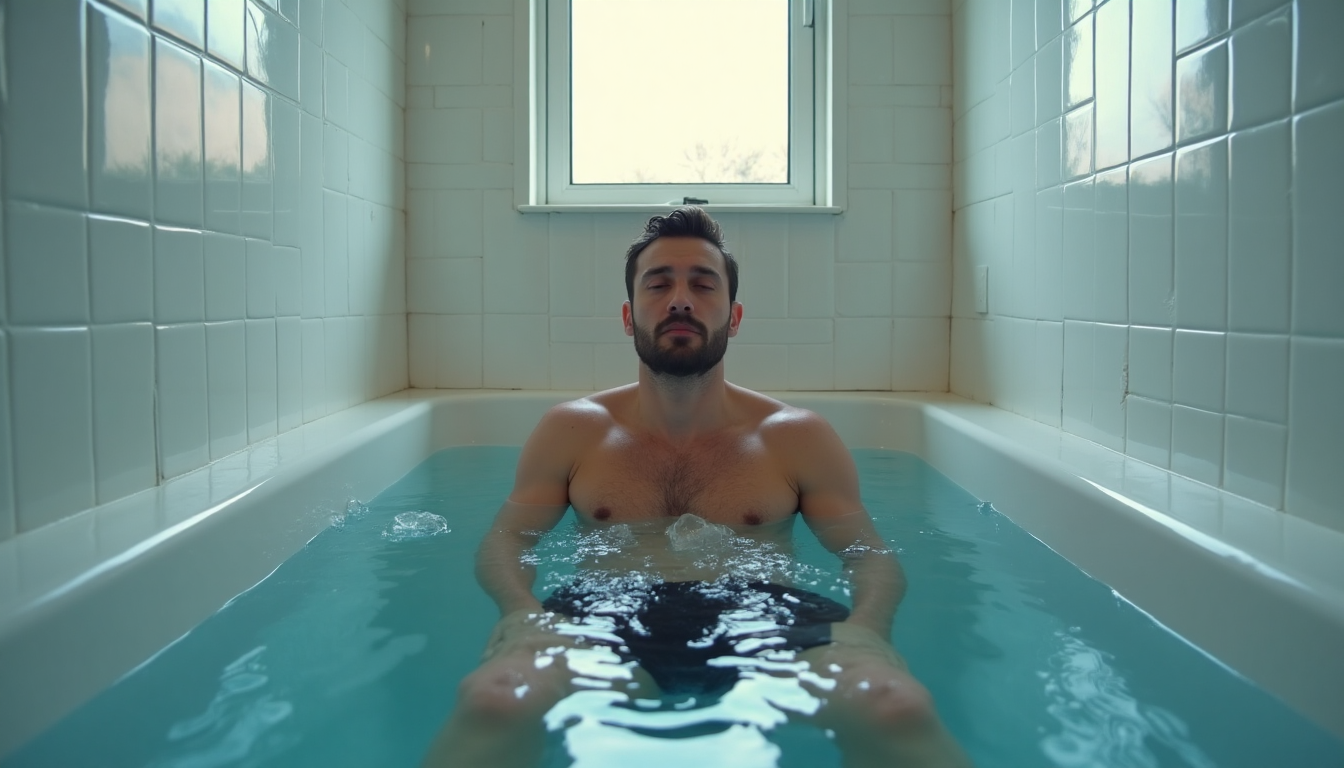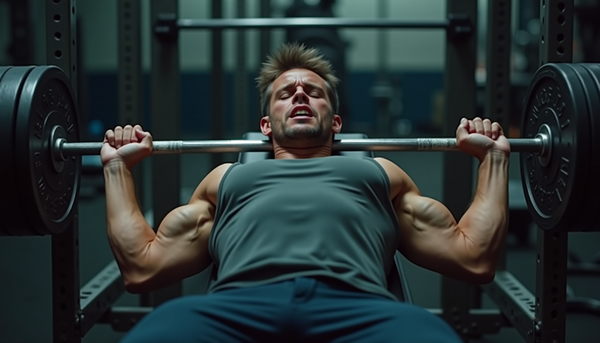I Tried Ice Baths and Saunas for 6 Months: Here's What Actually Works

I Tried Ice Baths and Saunas for 6 Months: Here's What Actually Works
When my Instagram feed started getting flooded with shirtless dudes sitting in ice tubs talking about "unlocking their potential," I'll admit—I rolled my eyes so hard I nearly pulled something.
But then again, I'm the guy who spent three years dismissing meditation as "woo-woo nonsense" before finally trying it and realizing it actually helped my anxiety. So maybe I should give this hot-cold thing a fair shot?
Six months later, after turning my shower into a torture device and convincing my local gym to let me monopolize their sauna, here's what I've learned about the real benefits of temperature therapy—minus the Instagram-worthy abs and motivational quotes.
The Science Behind Getting Uncomfortable
Before we dive into my personal experiment, let's talk about why subjecting yourself to extreme temperatures might actually be good for you. It all comes down to something called hormesis—basically, the idea that small doses of stress can make you stronger.
Think of it like lifting weights for your cellular machinery. When you expose yourself to hot or cold temperatures, your body thinks, "Oh crap, we're under attack!" and starts producing protective molecules called temperature shock proteins.
Heat Shock Proteins: Your Body's Cleanup Crew
When you're sweating it out in a sauna or hot bath, your body cranks out heat shock proteins. These little molecular janitors have some pretty impressive job descriptions:
- Protein quality control: They prevent other proteins from clumping together (the kind of clumping that's linked to Alzheimer's and diabetes)
- Cellular housekeeping: They act like molecular chaperones, escorting healthy proteins where they need to go and tossing out cellular garbage
- Mitochondrial support: They help your cellular powerhouses work more efficiently
Dr. Paige Geiger at the University of Kansas has been studying these proteins for years, and her research lab literally includes two hot tubs. Talk about a dream job, right?
Cold Shock Proteins: The Wake-Up Call
On the flip side, when you subject yourself to cold water, you trigger cold shock proteins. These guys have their own set of superpowers, though the research here is still catching up to the heat side of things.
What we do know is that cold exposure triggers a cocktail of brain chemicals—noradrenaline, cortisol, and dopamine—that can make you feel more alert and focused than a triple espresso.
My 6-Month Temperature Experiment
Alright, enough theory. Let me tell you what actually happened when I started messing with my body temperature on a regular basis.
Month 1-2: The Shock Phase
I started simple: 30 seconds of cold water at the end of my regular shower.
Holy. Shit.
That first blast of cold water felt like someone had plugged me directly into a wall socket. My breathing went completely haywire, and I may have let out some sounds that would make a sailor blush.
But here's the weird thing—about 10 minutes after getting out, I felt incredibly alert and energized. Not jittery like I'd had too much coffee, but genuinely more focused.
For the heat side, I started with 15-minute sessions in my gym's sauna at around 180°F (82°C). Much more pleasant than the cold showers, but I noticed something interesting: my heart rate would climb to around 120 BPM just from sitting there. It was like doing cardio while meditating.
Month 3-4: Building Tolerance
By month three, I could handle 2-3 minutes of cold water without hyperventilating. The energy boost was becoming more consistent, and I noticed I was handling work stress better. Not life-changing, but definitely noticeable.
The sauna sessions extended to 20-25 minutes, and I started using them strategically before bed. The sleep improvement was actually pretty dramatic—I was falling asleep faster and waking up less groggy.
Month 5-6: The Reality Check
Here's where things get interesting, and where I have to burst some bubbles.
After six months, I definitely felt benefits. The cold showers were giving me consistent energy boosts, and the sauna sessions were helping with sleep and recovery after workouts. But was I a completely transformed human being with superhuman powers?
Nope.
I was still the same slightly anxious, coffee-dependent guy—just with better sleep and a bit more stress resilience.
What the Research Actually Says (And Doesn't Say)
Let's get real about the claims floating around social media versus what the science actually supports.
The Good News: Heat Therapy Has Solid Evidence
The research on heat exposure is actually pretty compelling:
- Cardiovascular benefits: Regular sauna use is associated with lower blood pressure, reduced risk of sudden cardiac death, and improved artery health
- Sleep improvement: Studies show that warming your body temperature before bed can help you fall asleep faster and sleep more deeply
- Recovery: Heat therapy can help with muscle recovery and may reduce inflammation
One Finnish study followed over 2,300 men for 20 years and found that those who used saunas 4-7 times per week had a 50% lower risk of fatal heart disease compared to once-weekly users. That's... actually pretty impressive.
The Reality Check: Cold Therapy is More Complicated
The cold exposure research is less robust, but here's what we know:
- Mood and alertness: The neurochemical response to cold exposure can improve mood and focus
- Immune function: One study found that people who took cold showers called in sick 29% less often
- Stress resilience: Learning to breathe through cold exposure may help you handle other stressors better
But here's where I need to pump the brakes on some claims:
Fat burning: The idea that cold exposure significantly boosts metabolism through brown fat activation? Most of that research was done on mice, and humans have way less brown fat. The effect is probably minimal.
Performance enhancement: Can cold therapy replace your workout? Absolutely not. Dr. Geiger is clear on this: "There's never going to be anything that provides the same benefits as exercise."
The Accessibility Factor: You Don't Need Fancy Equipment
Here's probably the most important thing I learned: you don't need a $5,000 cold plunge tub or a home sauna to get benefits.
Cold Exposure for Beginners
Start with this dead-simple protocol:
- End your regular shower with 30 seconds of cold water
- Focus on your breathing (this is crucial—panic breathing kills the benefits)
- Work up to 2-3 minutes over several weeks
- Aim for water around 60°F (15°C) or whatever's the coldest your shower can manage
Heat Exposure for Beginners
Even simpler:
- Take a warm bath (104°F/40°C) for 15-20 minutes before bed
- If you have gym access, use their sauna for 15-20 minutes
- Hot tubs work too, though they're usually not as hot as traditional saunas
The Bigger Picture: Gateway Drugs for Health
Here's my biggest takeaway after six months of temperature torture: the real value isn't in the specific physiological benefits (though those are nice). It's in what Dr. Greg Wells calls the "gateway drug" effect.
When you start doing something as simple as cold showers, you're practicing discomfort tolerance. You're building the mental muscle that says, "I can do hard things." That mindset spills over into other areas of your life.
Since starting this experiment, I've been more consistent with exercise, better at sticking to my sleep schedule, and more willing to tackle uncomfortable tasks at work. Is that because of heat shock proteins? Maybe. But more likely, it's because I've proven to myself that I can handle temporary discomfort for long-term benefits.
The Bottom Line: Manage Your Expectations
Should you try hot and cold exposure? Probably, especially if you're looking for accessible ways to improve sleep, stress resilience, and overall health.
But please, for the love of all that's holy, don't expect miracles. You're not going to become a superhuman productivity machine or melt away body fat just by taking cold showers.
What you might get is:
- Better sleep (especially from heat exposure)
- Improved stress tolerance
- A small boost in energy and focus
- The satisfaction of doing something genuinely challenging
And honestly? In our comfort-obsessed culture, that might be enough.
If you try it, start small. Be consistent. And remember—the best protocol is the one you'll actually stick with, not the one that looks coolest on Instagram.
Have you tried hot or cold exposure therapy? I'd love to hear about your experiences in the comments. And if you're thinking about starting, what's holding you back?
Marcus Chen is a former software engineer turned biohacker who tests wellness trends so you don't have to. He writes about evidence-based health practices at the intersection of science and real life. When he's not subjecting himself to uncomfortable temperatures, he's probably drinking too much coffee and reading research papers.




